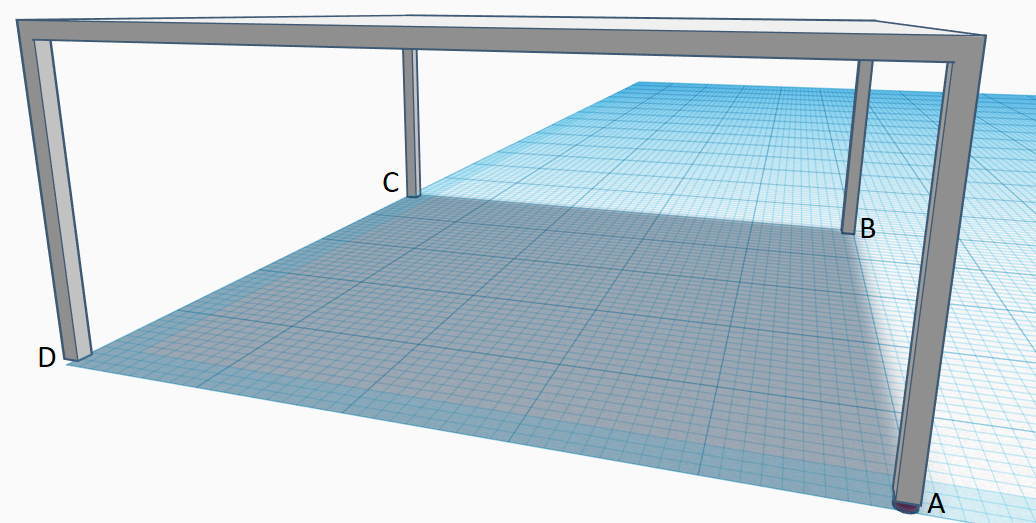Tippy table

This square table used to be perfectly stable, back when it had a foot at the end of each leg. Now three of them are missing and there's only one left at leg A.
The table measures 50 cm x 50 cm. The foot is flat and attached by a swivel so that the end of leg A is a constant 0.5 cm from the ground.
The table can now rock back and forth with the foot of A and leg C in constant contact with the floor.
If B is also in contact with the floor (as pictured), how far is D from the floor?
Note: consider the tips of the legs to be singular points at the corners of a square.
This section requires Javascript.
You are seeing this because something didn't load right. We suggest you, (a) try
refreshing the page, (b) enabling javascript if it is disabled on your browser and,
finally, (c)
loading the
non-javascript version of this page
. We're sorry about the hassle.
If A didn't have a foot, the ends of the four legs would be coplanar. Since B and C are both touching the floor, A and D are at the same height: E x a c t l y 0 . 5 c m